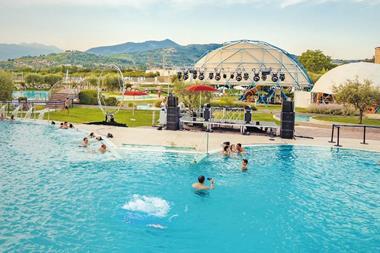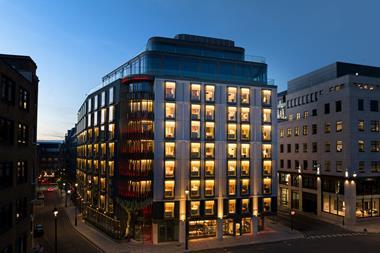While the logistics sector has come out of the Covid-19 recession more sought-after than ever, the very tight pricing in the market suggests that further yield compression is unlikely. Here, Allianz Real Estate head of logistics, Hugues Braconnier, and global head of research, Megan Walters, suggest there is still a strong investment case.

‘The strengthening investment case for logistics as an asset class’
By Hugues Braconnier and Megan Walters, Allianz Real Estate
‘One of the many visible signs of the dominance of e-commerce – and hence the logistics sector – has become Amazon’s Prime Day annual sales event. Held this year on 12-13th July, it has become a major commercial phenomenon increasingly supported with media coverage and commentary.
In any discussion about the global logistics market, due deference should be paid to Amazon and the role the firm has – and continues to play – in the evolution of the sector.
Amazon Prime reached 200 mln members globally in 2020, double the customer base it had in 2017. The firm’s delivery times are matched by wide geographical reach: one study found that, in Germany, Amazon was offering same-day delivery in the 20 largest cities. By comparison, an average large retailer was covering only two.
Consumer demand and competitive forces
Thanks in part to Amazon, over the past five years, the global logistics sector has grown rapidly into one of the most dynamic, innovative – and attractive – real estate markets. Looking out over the next five years, we expect this activity to continue as consumer demand and competitive forces, including ESG and greater technological proficiency, escalate.
The pandemic significantly catalysed the growth of the sector. Global e-commerce sales by the end of 2021 reached USD 3.1 trillion, marking a 140% increase in five years, while the global online penetration rate rose from 9% in 2016 to 20% in 2021.
Even if some of this growth is transitory, which we see as unlikely, changes in consumer preferences will be lasting. The pandemic marked a tipping point in Europe e-commerce adoption (16.3%) which has typically lagged U.S. (c. 20%) and Asia Pacific (South Korea >40%; China >25%).
However, despite these adoption rates, nowhere in Europe is close to full e-commerce penetration and everywhere will need more logistics space.
One study noted that Europe will require 20.17 million sqm of additional space by 2025. More widely, global e-commerce is forecast to need an extra 138 million sqm to satisfy annual e-commerce sales of USD 3.9 trillion.
Countries with lagging penetration will grow faster going forward while early adopters such as the UK and the Netherlands are now starting to adopt innovative solutions such as instant grocery delivery.
Further yield compression unlikely
While the logistics sector has come out of the Covid-19 recession more sought-after than ever, the very tight pricing now seen in the market suggests that further yield compression is unlikely. Moreover, macroeconomic and geopolitical developments since the start of 2022 represent headwinds to last year’s bullish outlook.
The situation in Ukraine disrupted global recovery and international trade, which had already taken a big hit from the pandemic. Shifting consumer spending from retail towards services and deteriorating household purchasing power due to high inflation levels have slowed down the pandemic-driven e-commerce boost.
Furthermore, given historically low logistics property yields, the rise in real government yields since the start of this year implies repricing risk for the sector.
Despite these near-term headwinds, however, the European logistics sector’s secular long-term demand drivers persist.
Supply fundamentals are healthy with the European logistics vacancy rate at 3.3% in Q1 2022, an all-time low. Development costs are rising amid spiking construction costs and higher interest rates, slowing down new supply. Long-term demand drivers remain in place, supported by an even greater importance on near-shoring of supply chains after Russia’s invasion of Ukraine.
As a result, rental growth in the logistics sector is expected to outperform other property sectors in Europe. Understanding logistics’ long-term demand trends is therefore more important than ever.
As further yield compression is unlikely in the current environment, future returns will be driven by rental growth. What are these long-term drivers? For one, strong demand for ESG performance will lead to green building rental premiums. This is especially true in Europe: the region has stringent regulations, higher consumer sensitivity and ambitious corporate sustainability targets.
Europe’s eco-friendly warehouses already setting new standards
Europe’s eco-friendly warehouses are already setting new standards from design to construction and operations. Many new developments are designed to be carbon neutral with renewable energy sources such as solar panels and onsite wind turbines.
Further innovative solutions include using rainwater to irrigate green spaces and clean interiors are also being tested.
A societal focus on sustainability and new technologies will also reinforce and accelerate the trend towards urban logistics. Adding an urban fulfilment centre cut transportation emissions in half compared to out-of-town distribution, and this will result in further last-mile and urban assets.
Demand for urban logistics space will rise as delivery times continue to compress. Fast and reliable delivery provides a significant competitive advantage to retailers. Looking ahead, improvements in delivery speed will require significant supply chain investment towards end-consumers.
In addition, dense European cities have scarce available land and many zoning restrictions and will require innovative approaches to logistics. Multi-storey warehousing, already used in Asia, may become popular in Europe if the necessity for last-mile facilities and land values remains high enough. Vertical last-mile logistics hubs include G Park London Docklands and Paris Air2 Logistique.
The strength of the real estate investment case
All of this points to the continued growth of the logistics sector, and the strength of the real estate investment case. According to INREV fund-level return data to the end of Q1 2022, logistics posted a five-year annualized return of 17.22%. This outperformed all other sectors, including residential (13.3%) and office (7.5%). The future could be even more significant.









